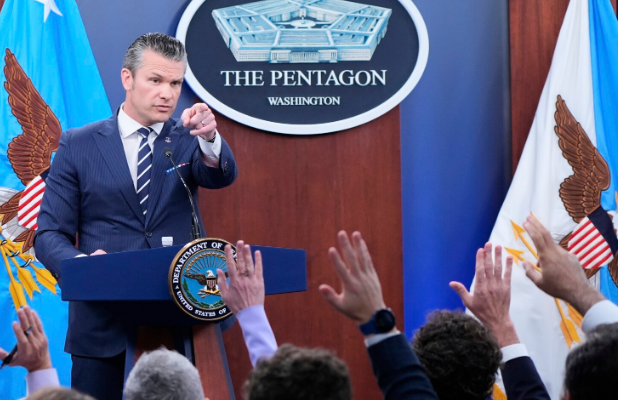
400 kg of Uranium Vanishes in Iran Post-U.S. Strikes, Igniting Espionage Fears
400 kg of 60% enriched uranium, sufficient for ten nuclear weapons, are missing from Iran as a result of US “bunker buster” attacks. US Vice President JD Vance confirmed the removal of the crucial material, escalating concerns around the world and prompting urgent enquiries about its new whereabouts.
The US “bunker buster” attacks against three important Iranian nuclear sites last week have resulted in the disappearance of a dangerous 400-kilogram cache of 60 percent enriched uranium, which could be used to produce up to 10 nuclear bombs. The missing material is there, US Vice President JD Vance told American network ABC News, escalating concerns over Iran’s nuclear plans.
According to reports, including those from Israeli sources cited in The New York Times, Iran may have moved the enormous stockpile and some of its equipment a few days before the horrifying US attack. A procession of 16 trucks was seen parked near the Fordow nuclear complex, which was built deep into a mountain and is thought to be mostly impervious to conventional missile strikes, according to satellite photos taken before the US attack. Israel demanded that the US send its GBU-37 “bunker busters” and B-2 “Spirit” bombers on Sunday in response to these images.
The nuclear installations in Iran at Fordow, Natanz, and Isfahan were the targets of the potent bombs. Satellite images taken after the strike verified that all three locations had sustained significant damage, but the trucks that had been spotted at Fordow were noticeably missing. Although the precise contents and final destination of the transferred material are still unknown, US and Israeli intelligence have a strong suspicion that it was moved to another subterranean storage location close to Isfahan, the old capital.
The missing uranium was last examined just one week before Israel launched its initial attacks against Iran, according to Rafael Grossi, director general of the International Atomic Energy Agency, the global nuclear watchdog. Grossi made a strong case to the UN Security Council last week that it is “essential” that IAEA inspectors return to their important work in Iran as soon as possible. Further military escalation, he said, would simply delay this “indispensable work” and drastically diminish the likelihood of a diplomatic solution to prevent Iran from acquiring nuclear weapons.
Conflicting Narratives Regarding Iran’s Nuclear Intentions
Iran has consistently maintained that the goal of its nuclear program is peaceful. However, Israel said that Tehran was nearing a “point of no return” in its purported pursuit of nuclear weapons, which served as the justification for its most recent missile strikes. Iran vowed to withdraw from the Non-Proliferation Treaty (NPT), which is the cornerstone of the international framework designed to stop the spread of nuclear weapons, following the Israeli attacks. Takht Ravanchi, Iran’s deputy foreign minister, vehemently disagreed with calls to abandon the initiative, saying, “No one can tell us what to do.”
However, the United States’ explanation of Iran’s nuclear weapons position has been somewhat confused. According to US intelligence cited in a CNN story last week following Israel’s initial missile attacks, Iran is at least three years away from having the capacity to produce nuclear weapons and is not actively pursuing them. Furthermore, the intelligence showed that Israel’s missile strikes had only caused Iran to be delayed by a few months, mainly because of the core research sites like Fordow being buried deep underground. But a senior diplomat reportedly told CNN that Iran possesses every component needed to produce a nuclear weapon.
Confusion was exacerbated when Tulsi Gabbard, the US Director of National Intelligence, appeared to contradict her own statement before Congress in which she said that Iran was not working on nuclear weapons. She revised her assessment on Saturday, suggesting that Iran might produce them “within weeks.” This change followed President Donald Trump publicly rejecting her previous intel as “wrong.”
Iran was originally given two weeks by President Trump to accept a new nuclear guarantee agreement. But after intelligence verified that Israel could not successfully destroy all Iranian sites without American support, he launched the US strikes.
“We’re not a part of it (but) we could possibly.” Just hours before the US strike, Trump demanded on ABC Sunday morning that Iran and Israel reach a deal “before it is too late.” In celebration of the 37-hour military campaign by seven B-2 bombers from a Missouri air base, Trump declared after the successful attack that Iran’s nuclear program was “completely and totally destroyed” using the “bunker busters” and decoy Tomahawk missiles.


